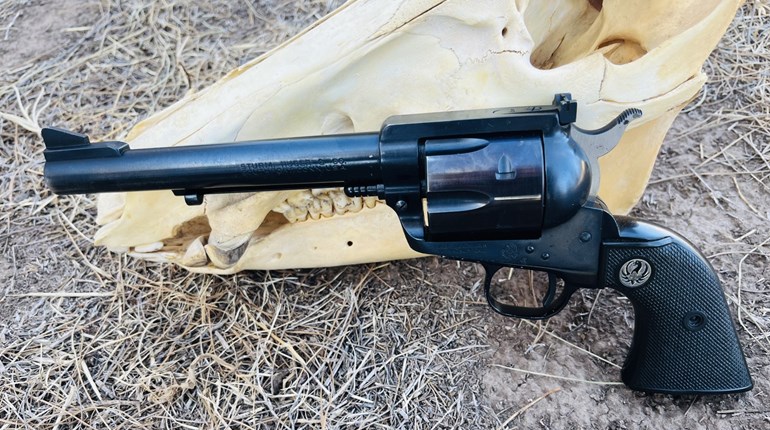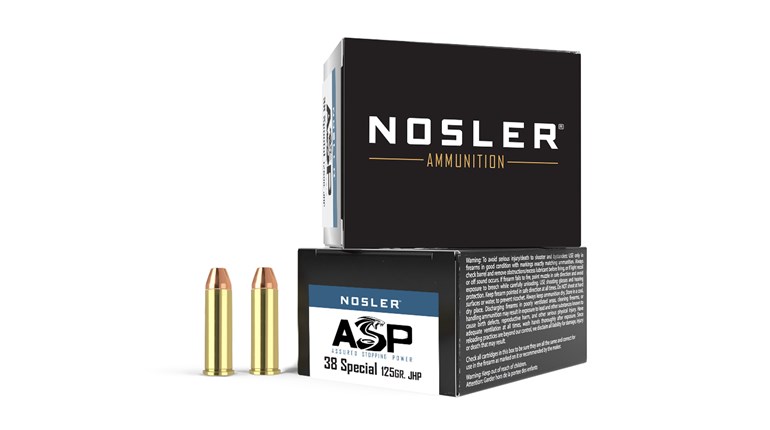
I used to think that we gunwriters brought out the old “9 mm vs. .45 ACP” articles when we ran out of something else to write about. But, now I’m not so sure, because I see the same debates going on in gun forums and other social-media discussions. I suspect if we could go back in time and find a copy of the old Sherwood Forest Shooting Gazette, we would find authors having at each other over the “Crossbow vs. Longbow” issue. I think that some folks just like to argue.
I have spent some 50 years studying actual gunfights, new and old. This research suggests we might be well-advised to take a whole different look at what is considered to be a “good” defensive-handgun cartridge.
One might consider that James Butler “Wild Bill” Hickok favored a pair of Colt 1851 Navy revolvers. These guns were chambered in .36 caliber and their payload put them in the power level somewhere between .38 S&W and standard-velocity .38 Spl. Study Hickok’s history and you’ll know he was quite effective with this caliber.
Then there is Ranger Captain Frank Hamer who said, “When I go to hub Hell, I want a .45.” Hamer and “Old Lucky”—his favored Colt .45 single action—were a force to be reckoned with. It has been said that he survived more than 50 gunfights, although we don’t know in how many of those he used his revolver instead of his rifle.
My friend Dan Westbrook wasn’t the least interested in the .45 Colt cartridge, and he could give you all kinds of reasons why the .38-40 Win. was way better. And, of course, let’s not forget FBI shootist Jelly Bryce, who cleaved to the .44 Spl. for serious pistol work.
And then there are those who look down their noses at the mere mention of .45 ACP or “hardball.” They will quickly tell you how ineffective the old full-metal-jacketed .45 ACP ammo really is. The only trouble with that position is that there are a whole bunch of soldiers, lawmen and plain old citizens who are around today because that very same load did its job and saved their lives.
Setting all of that aside, we might accept that bullet placement trumps caliber and cartridge selection. A bullet incapacitates by causing tissue damage. Proper placement causes serious trauma to important tissues.
The problem is there are so many variables involved. A bullet striking heavy bone may be expected to act differently than one that only impacts soft tissue. The defensive shooter may have to deal with an attacker wearing heavy clothing. They may also have to shoot through glass, sheet rock or other intermediary substances, as in carjackings or home invasions. In these cases, the size of the projectile is not as important as the power of the cartridge that drives it to the vital zone.
Today’s defensive ammunition has come a long way from the days when Hickok loaded round lead balls in his percussion revolvers. We have bullets that will reliably expand, causing added tissue damage, and, at the same time, penetrate deep enough to impact the important tissues that will incapacitate an attacker as quickly as possible.
My own opinion is that penetration is more important than bullet expansion. I want a cartridge and bullet with power enough to penetrate at least 18 inches. That offers a little better chance of dealing with intermediary obstacles. And, yes, that sort of defensive load will often exit the attacker’s body, causing more blood to get out and more air to get in. It is my job, not the bullet’s, to know who and what is behind the intended target and not endanger others.
Fortunately, we have ammunition that will penetrate in this fashion and still expand. While we are well-advised to use the least-expensive ammunition that we can find for our practice, it is an excellent idea to go to the extra expense of actually carrying only premium ammunition from reputable manufacturers. From .38 Spl./9 mm on up, we can find good ammo that will both penetrate adequately and expand properly.
So, instead of worrying about the old defensive-caliber debate, a person is well advised to carry the most-powerful handgun cartridge he or she can shoot quickly and accurately. Load the best defensive ammunition that money can buy. What that caliber ends up being depends upon the shooter’s physical build, level of experience and any health issues that might prevail.
In my studies of gunfights, I have found successful applications and results with just about every caliber. I have also found instances where those same calibers failed to stop the threat. Bullet placement trumps caliber every time in prevailing in a gunfight.
The defensive shooter is well advised to select the handgun and caliber that he or she shoots best. Then, load it with quality ammunition that will both penetrate and expand. Finally, by all means, put the bullet where it needs to go to stop the fight quickly.


































